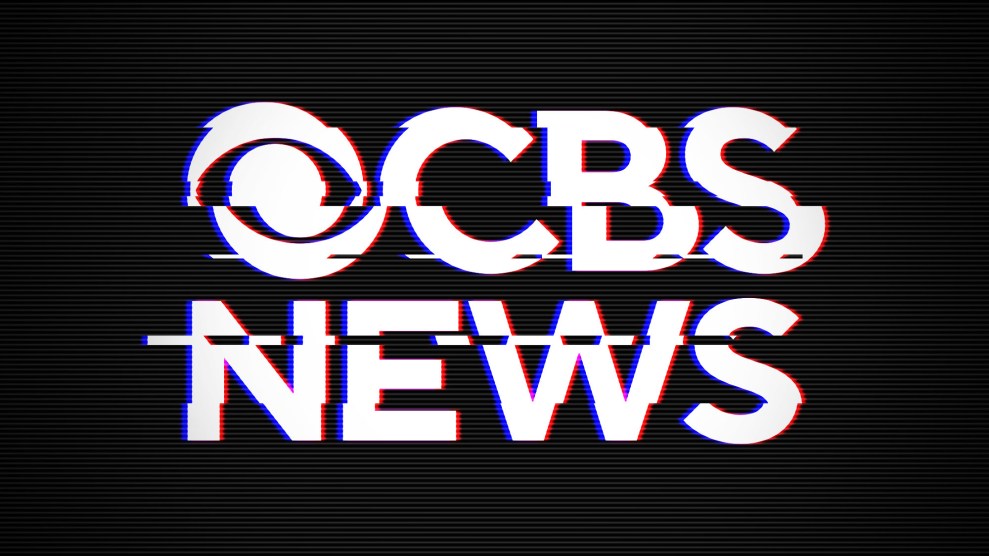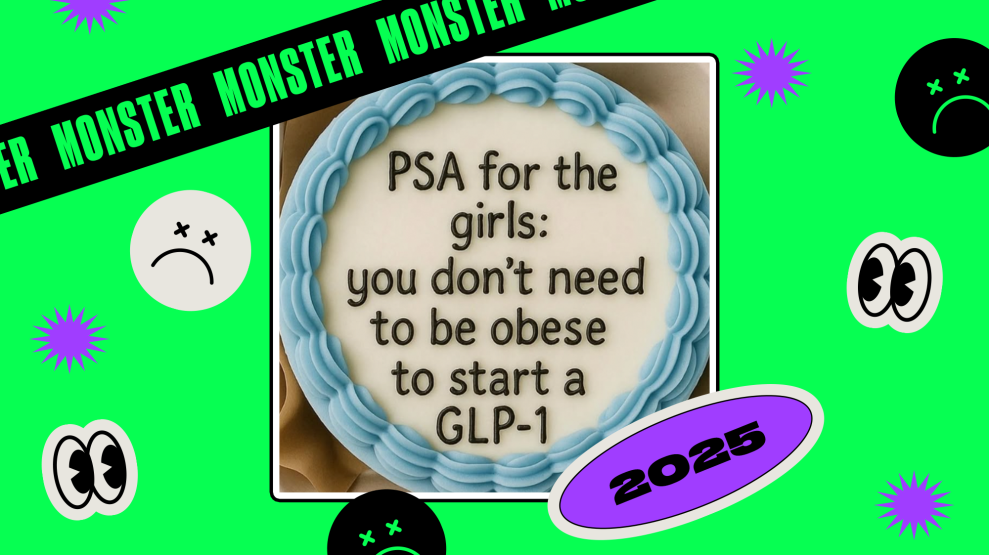When I first met Nancy Pullen, the president of P.S.L. Marketing Resources, she was wearing a chambray shirt emblazoned with a Birds Eye frozen foods logo — I knew I had come to the right place. Clearly, this was a person who lived and breathed brands, a person who could help me in my quest to turn Your Ad Here into a trusted infotainment resource that would resonate deeply with Mother Jones readers.
“So you read my last piece?” I asked as we sat down to talk in P.S.L.’s conference room.
“I did,” she replied cheerfully. “The one where all the publicists kept telling you your column wasn’t newsworthy.”
“Yeah, that one. Which is why I’m here, basically. Because if that’s what the publicists think — ”
“Then what do your readers think?” she asked, finishing a thought I had been trying to avoid. “You want to find out if what you’re offering is a viable product.”
In the good old days, market research was the province of advertising agencies and detergent manufacturers; magazine columnists, with occasional interference from their editors, were presumed to exercise sole authority over their columns. Back then, positioning “creative” work as a “product” that could be pretested and refined through market research would have no doubt riled purists. Now, however, it’s just as hard to obtain shelf space in the media world as it is in the supermarket. If you want to increase your chances for long-term survival, you do whatever you can to learn more about the audience you’re hoping to reach. Thus, Broadway producer Garth Drabinsky has used market research firms in his quest to deliver consistently satisfactory theater experiences, and best-selling author James Patterson (the adman who wrote the Toys “R” Us jingle) has relied upon feedback from test readers to fine-tune his thrillers.
The market research business that now guides both soap salesmen and sudsy writers is a booming, multibillion-dollar industry. According to Advertising Age, the top 100 research firms in the U.S. recorded $4.2 billion in revenues in 1997, an increase of 12.2 percent from 1996. With an industry of such scope at my disposal, I’m now embarrassed to disclose how I produced the first two items in my product line: I just turned on my computer and started typing.
While laziness and the overblown self-assurance typical of most writers were at least partially responsible for this course of action, for Pullen’s benefit I now chalked it up to my busy schedule and a relatively nonexistent budget. “You’re right,” Pullen agreed as I raised these issues. “Research can be expensive. But not as expensive as bringing a product to market that no one actually wants.”
“So when you’re doing a consulting project for Disney or Hewlett-Packard,” I said, naming a couple of P.S.L.’s clients, “and you end up doing quantitative research, like telephone interviews with hundreds of consumers or something like that — how much does something like that actually cost?”
“It really varies,” Pullen said. “Basically anywhere from $30,000 to $100,000.”
“And focus groups? They’d be less expensive?”
“We often do what we call ‘mini’ focus groups,” Pullen replied. “A focus group usually has eight to 12 participants, but with a mini-group, you’ve only got four or five. For any typical project, we might run four to five of these mini-groups.”
Pullen also said P.S.L. pays participants anywhere from $50 to $150. Calculating the expense of such a project, I tried a compromise: “Maybe we could do two mini-groups,” I suggested. “And $50 a person ought to be enough, don’t you think? I mean, a lot of people are happy to criticize this column for free.”
“Getting people isn’t the problem,” Pullen explained. “What you need to do is get the right people. Because if you don’t get people who have a potential interest in your column, then your research is meaningless. What you want to do is get individuals who fit an educated guess of the target customer, who are articulate but aren’t research experts.”
At this point, Pullen began delineating all-too-common focus group species: the know-it-all types who monopolize discussions and sound more like auditioning consultants than candid consumers; the me-too opinion recyclers who mostly nod their heads a lot and second everything that other participants have already said; and the focus groupies who attend sessions primarily for the social opportunities and the free snacks.
Interaction among participants and the influence of the moderator were factors to consider as well. “For example, if you’re talking about toilet paper, you learn not to have men and women in the same group,” Pullen explained. “It’s one of the things they won’t talk about in front of each other. And if your group’s composed of 15-year-old girls, then make sure the moderator’s not too much of a hunk,” she advised, recalling a group wherein the participants paid more attention to the moderator’s “amazing eyes” than to the product they’d been recruited to evaluate.
I also spoke several times with Pullen’s colleague, Laura Klapper, as she developed our recruitment “screener” — a list of questions and qualifications designed to weed out all but the most ideal candidates. For the group composed of Mother Jones subscribers, we wanted articulate individuals 35 and older who had read at least one of my columns. For the group composed of nonsubscribers, we wanted individuals 20 to 34 who subscribed to at least one magazine from a list that included Time, The New Republic, Harper’s Magazine, and several others, and who would at least consider reading Mother Jones. In addition, we excluded anyone who identified him- or herself as a Republican; even though Your Ad Here is a relatively nonpartisan endeavor, we felt Republicans were more likely to be biased against Mother Jones, and that bias might carry over toward my column regardless of its contents.
While P.S.L. handled the recruiting of nonsubscribers, several Mother Jones interns were enlisted to recruit the subscribers. At first, the responses were less than encouraging. “I probably skipped it,” said one subscriber, when asked if she had ever read Your Ad Here. “These [columns] are not sticking out to me,” another replied. “You people are calling me too much!” complained an overly telemarketed reader who’d recently been hit up by the Mother Jones Investigative Fund. “If I get one more call, I’m going to cancel my donation.”
One politely unyielding subscriber demurred, “The more you know about us, the worse off we are, dear.” There were also a few exotic dodges, such as the man who said he was too busy having sex (no amount of research could explain what motivated him to pick up the phone in the first place).
With the focus group meetings looming just days away and only two participants signed up, we changed our tactics. Instead of asking the qualifying questions first and then telling them about the $50 honorarium, we told them about the money first. Suddenly, there was much more interest. Unfortunately, we were still having trouble finding subscribers who had actually read either of my first two columns, so we also relaxed that qualification.
Eventually, we managed to recruit seven subscribers and six nonsubscribers. And thus, on a Saturday morning in November, I went to the San Francisco facilities of Fleischman Field Research, where our two sessions were scheduled to take place in the Herb Caen Room, an efficient-looking, gray-carpeted space equipped with a long table, half a dozen chairs, and a wall-sized one-way mirror.
As I waited in the observation room behind the mirror, I studied the discussion guide Klapper would use to lead the group. “How did you rate the column?” it asked. “What other changes, if any, would you like to see within the column?”
But was I really ready to listen? While focus groups can be characterized as tools for cautious souls who favor least-common-denominator approval rather than their own convictions, it also takes a certain bravery to offer up one’s work to a roomful of candid strangers and then remain within earshot of their conversations about it. Was it too late to turn back? Alas, as I looked up from the discussion guide, I saw through the one-way mirror that the participants were entering the room…
Focus group highlights — and a new and improved column? — in the next issue.
















